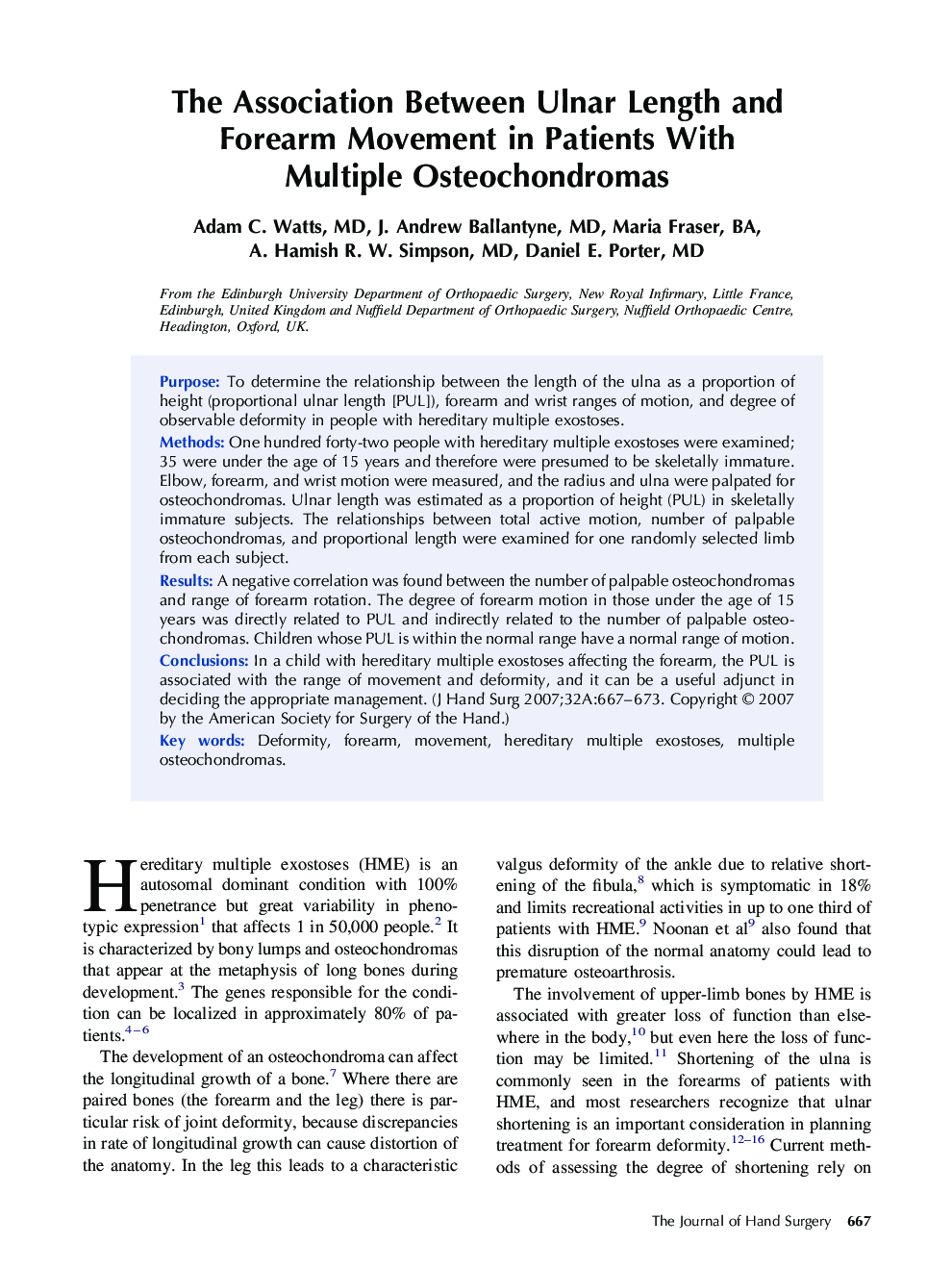| Article ID | Journal | Published Year | Pages | File Type |
|---|---|---|---|---|
| 4070281 | The Journal of Hand Surgery | 2007 | 7 Pages |
PurposeTo determine the relationship between the length of the ulna as a proportion of height (proportional ulnar length [PUL]), forearm and wrist ranges of motion, and degree of observable deformity in people with hereditary multiple exostoses.MethodsOne hundred forty-two people with hereditary multiple exostoses were examined; 35 were under the age of 15 years and therefore were presumed to be skeletally immature. Elbow, forearm, and wrist motion were measured, and the radius and ulna were palpated for osteochondromas. Ulnar length was estimated as a proportion of height (PUL) in skeletally immature subjects. The relationships between total active motion, number of palpable osteochondromas, and proportional length were examined for one randomly selected limb from each subject.ResultsA negative correlation was found between the number of palpable osteochondromas and range of forearm rotation. The degree of forearm motion in those under the age of 15 years was directly related to PUL and indirectly related to the number of palpable osteochondromas. Children whose PUL is within the normal range have a normal range of motion.ConclusionsIn a child with hereditary multiple exostoses affecting the forearm, the PUL is associated with the range of movement and deformity, and it can be a useful adjunct in deciding the appropriate management.
